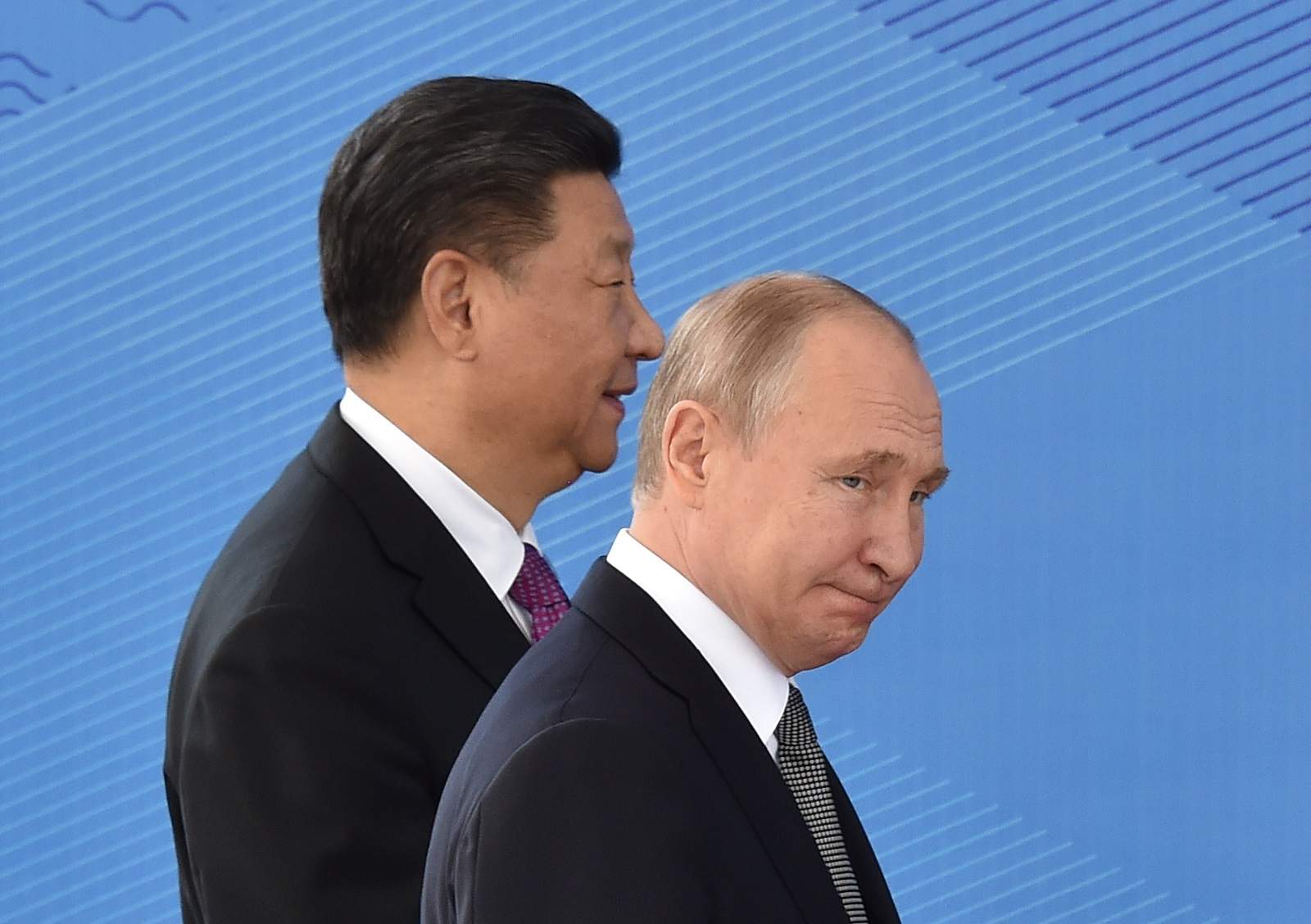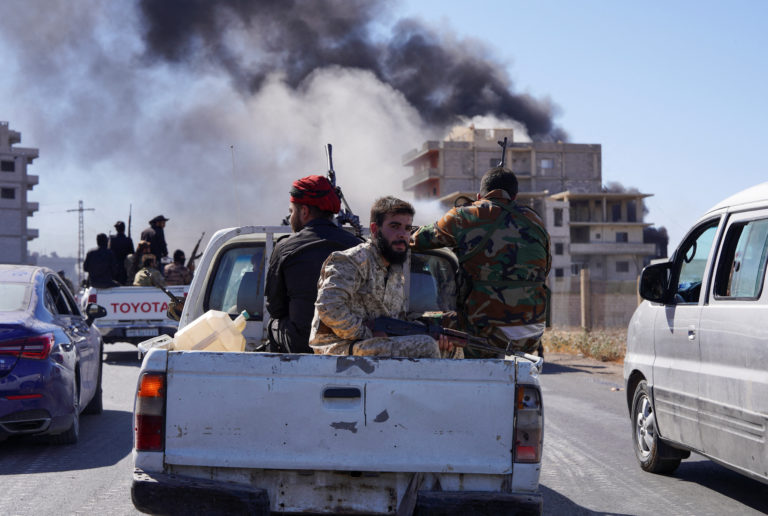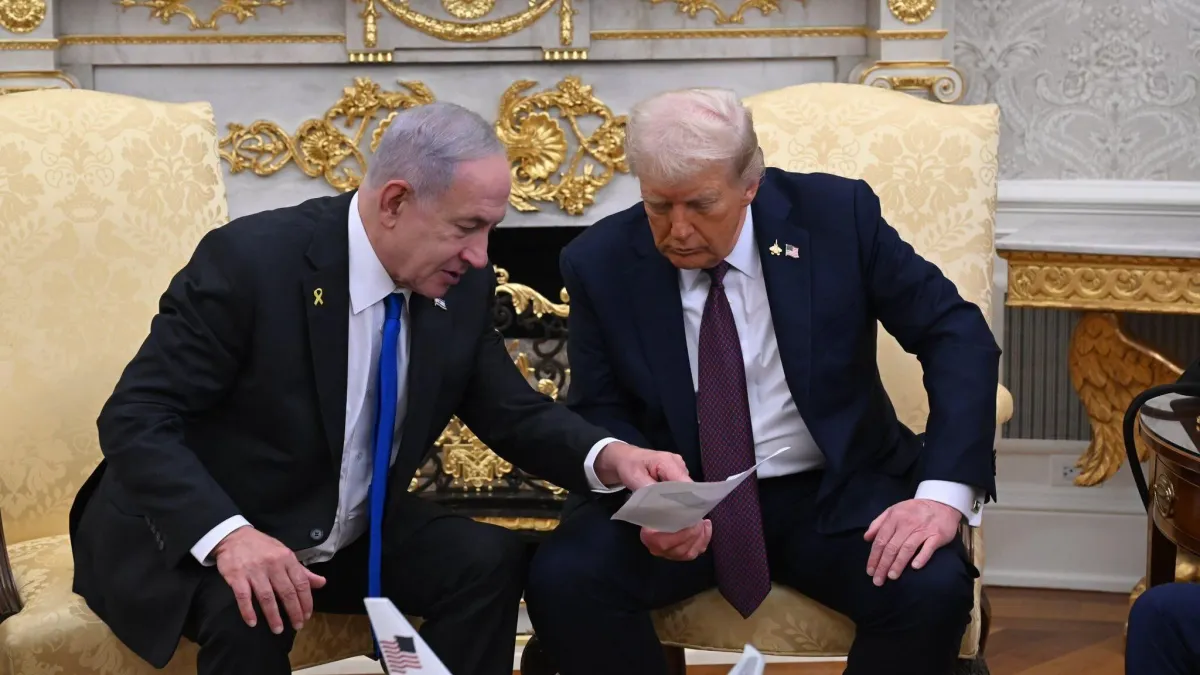In the last column…
In the last column, of the same name but Part I, we discussed the reasons for simplifying all dictatorships under the single label of “dictatorships,” how such simplification can be harmful in the way we deal with different dictatorships around the world, and finally we looked at the first example, that of Russia (1999–present). In this column, we will discuss the second example, China post-Mao and pre-Xi (1976–2012), and finally compare the two cases to highlight not only their differences, but also the practical consequences of said differences in the way we deal with each. It is therefore necessary to remind the reader that both columns should be read, since they complement each other. Without the first, this one is incomplete. Without the second, the first is biased.
The Chinese case (1976–2012)
Politics in China, especially in the period here analyzed (1976 to 2012), is intrinsically intertwined with party politics. In other words, although China has eight other political parties besides the Chinese Communist Party (CCP) – together forming the so-called “united front” – the CCP is constitutionally the only party allowed to govern the country. Thus, China’s own structures and institutions are woven together with those of the party, and even other forces within the country – such as the army, economic elites, and the police – are, first and foremost, composed of party members.
As illustrated by Li, the city of Shanghai has both a mayor and a CCP secretary. The mayor can only be mayor by being, first of all, a high-ranking party member. Even so, because he is lower in the CCP hierarchy than the party secretary, the latter exercises more influence and real power in Shanghai than the mayor.
But if the CCP is officially the only governing party, what do the other eight parties do? In essence, they provide political consultation and technical cadres to support the CCP’s governance. On a more symbolic level, they also grant greater legitimacy to the political system, increasing the visibility of minority issues and at times politically co-opting potential dissidents.
The CCP remains the party with the largest number of members in the world, and the second in longevity of continuous constitutional rule – losing only to the North Korean Workers’ Party. The party’s power is concentrated in the seven members of the Politburo Standing Committee – traditionally including at least one member of the army, thereby ensuring the acquiescence of the armed forces. Lesser decisions, specific agendas, and influence can still be exercised by the broader Politburo, with a total of 25 members. Both bodies are officially voted into power by the Central Committee, which in turn is elected every five years by delegates during the CCP’s National Congress. Delegates represent China’s 31 provincial-level administrative units, Taiwan’s minority representation, and distinguished retired party members.
In practice, however, the Politburo presents the Central Committee with a list of preferred candidates, unofficially limiting the Committee’s freedom of choice. Although not formally prescribed in the CCP constitution, it was an accepted practice – and was in fact followed during the period we analyze – that the position of General Secretary (the highest rank in the party hierarchy) should not exceed two terms (ten years). After that period, a new General Secretary would take power, ensuring a certain rotation and giving each Politburo member a real chance of reaching the top.
The CCP describes its leadership in generational terms, with the General Secretary as the core representative of that generation. In the period under analysis, the General Secretaries were, in order: Hua Guofeng; Deng Xiaoping; Jiang Zemin; and Hu Jintao. It is also common practice – followed throughout the period – that the successor be “pointed out” during the end of the first term of the incumbent, by being promoted to high-visibility posts, including a seat on the Politburo Standing Committee.
It is during the Central Committee’s annual meetings that posts are distributed and new policies presented. For example, it was during such a meeting that Deng Xiaoping unveiled his policy of opening China’s economy – a move that led to the rise of a globally competitive industrial base, which in turn created a new economic elite directly tied to the state. Though the idea of “opening up” suggests a market economy, industries and elites constantly benefit from state regulation, subsidies, capital injection, and even trade defenses considered abusive by other countries.
Since there are far fewer seats than candidates, political competition to enter the Central Committee is fierce. This competition, combined with the complex multilayered system of governance, causes potential opponents to be swallowed by bureaucracy when trying to resist government initiatives. The political stability created by unofficial rules of succession and constant internal elections, the economic stability from rapid development, and the social stability created by making the CCP visible even in the remotest corners of the country meant that no major political turmoil or general opposition movements arose during the period analyzed.
Another element often cited to explain social cohesion and the lack of pro-democracy mobilization among the Chinese population – though not universally agreed upon by scholars – is Confucian legacies. As Lieberthal proposed, during the imperial era, Confucian values were spread as state values, particularly through civil service examinations and the influence of emperors and local officials. According to him, rituals were seen as the formal expression of “proper conduct,” such that “proper practice” would eventually mold “proper thought.” Thus, the focus was on orthopraxy rather than orthodoxy. In other words, the empire cared more about how people acted than about how they thought, on the understanding that action would eventually reshape thought. These Confucian remnants about the power of pro-government action over controlling citizens’ minds remain central to Chinese communist thinking.
The Central Commission for Discipline Inspection, though less competitive than the Central Committee, is vital for monitoring and overseeing party members. Through its actions, corrupt or disobedient members are punished – an institutional tool to promote subservience to the party. The Secretariat handles administrative functions such as organizing trips, meetings, and drafting documents. It also oversees the organization, propaganda, united front, and international liaison departments. This gigantic state-party apparatus ensures positions for many political elites, as well as opportunities for outsiders to join the political process, incorporating those far from the power center into the state.
Examples of this trajectory from the periphery to the center of power abound, including Jiang Zemin and Xi Jinping themselves. Jiang, raised by an adoptive uncle after losing his father as a child, overcame financial limitations to study engineering and gradually rose through party ranks until reaching the presidency. Similarly, Xi spent his teenage years working in a poor village in Shaanxi, living in caves and performing manual labor.
A less heroic way of looking at the inclusiveness of China’s political system is through the systematic manipulation of provincial data. According to Jeremy Wallace’s seminal study (referenced below), electoral cycles are the main reason for sharp increases in the production and submission of unrealistic economic figures by provinces. This indicates less a fear of punishment – for manipulation would otherwise be constant – and more a desire for promotion, showing how regional leaders are deeply integrated into the informal practices needed to rise within the regime.
Comparison
To make the comparison between Putin’s Russia (1999–present) – discussed in the previous column, Part I – and post-Mao, pre-Xi China (1976–2012) clearer, let us frame it through guiding questions: 1) What happens when the leader dies? 2) Why do political elites accept the regime? 3) Why don’t the armed forces revolt? 4) Why don’t regional leaders revolt? 5) Why do economic elites accept the regime? 6) Why don’t the populations revolt?
What happens when the leader dies?
As discussed in the last column (Part I), the Russian system under Putin is highly personalist. Power is not institutionalized in parties, succession rules, or stable bureaucratic arrangements, but concentrated directly in the president. Institutions have been molded and constantly adapted to guarantee the centrality of his leadership: political, military, and economic elites compete to please him; regional leaders are appointed by him; the opposition is neutralized. This generates a dilemma: if Putin dies or becomes unable to govern, there is no clear mechanism for transition, making the regime highly unstable—and therefore dangerous. The risk is of a power vacuum comparable to Libya after Gaddafi, but on an infinitely greater scale given Russia’s weight in the international system. As Trenin points out, the gravest problem may not be Putin’s foreign policy, but the absence of any if the leader were to suddenly disappear. In China, by contrast, the death of a leader was anticipated in institutional practices and party norms. The CCP organized a relatively stable succession system, based on the Politburo and Central Committee, in which the General Secretary does not remain beyond two terms (an informal but respected rule during this period). Moreover, by the end of the first term, the successor was already pointed out and promoted to high-visibility posts, ensuring a smooth transition – as with Jiang Zemin and Hu Jintao. Chinese politics of the period did not depend on a particular figure but on the CCP’s bureaucratic structure, making the regime stable both internally and externally, and allowing long-term policy planning. Thus, the death or retirement of a leader did not represent collapse but continuity, reinforcing the idea that the party was greater than any individual. The comparison itself already makes clear how other countries can deal differently with each autocratic regime. Stable China tends to follow patterns and trends, generating clearer expectations in political, economic, health, and other arenas. Given the system’s longevity, multilateral and long-term policies can be pursued. However, given its stability and depersonalized nature, democratization is less likely. The same cannot be said of Russia. Bilateral and short-term policies are easier to attain with Russia than long-term or multilateral ones, given the regime’s temporal limits. There is less market and government confidence due to instability. Informal negotiation forums take precedence over formal state channels or institutional arrangements.
Why do political elites accept the regime?
In Russia, Putin grants benefits to political elites but also pits them against one another. Formal opposition parties are rewarded for loyalty and punished for dissent. He fosters internal rivalries to avoid unity against himself. Elites accept the regime out of material incentives and fear of exclusion. In China, by contrast, the CCP offers clear channels for political advancement. There is competition to join the Central Committee, and real opportunities for outsiders to rise. Rotation and informal succession rules provide predictability. Thus, political elites accept the regime because it offers stability and upward mobility. For third countries, consequences are again clear. To destabilize Russia, one would need only to alter the material incentives vs. exclusion risk equation. For example, during the war in Ukraine, EU countries imposed economic sanctions on Putin’s elites, aiming to reduce material incentives and make elite revolt easier. Putin recalibrated risks and rewards by permanently excluding certain former elites, reducing the number of people who needed rewards and thereby increasing rewards for the loyal survivors. Destabilizing China via elites is more complex, given the systemic, instrumental relationship between elites and the state. In this case, the best option for third countries may be to use China’s multiple bureaucratic forums to achieve favorable results. In other words, negotiations could be conducted with the central government, regional governments, companies, and so forth. Informal negotiation channels are amplified during China’s electoral cycles.
Why don’t the armed forces revolt?
In Russia, Putin divides functions among different security agencies and even fosters rivalry among them. All compete for resources and privileges granted by him. Thus, no single agency or the army alone can challenge the regime. High-ranking officers are part of his inner circle. In China, by contrast, the army is formally subordinate to the party, not the state. There is always at least one military member in the Politburo Standing Committee. The army’s prestige and resources depend on the CCP, not individuals. Therefore, the military is structurally embedded in the regime and has no incentive to revolt. In both cases, the armed forces appear neutralized as independent political actors. Despite differences in how this was achieved, the practical outcome is similar. Why don’t regional leaders revolt? In Russia, governors are not elected but appointed by Putin. They often come from outside the regions they govern, limiting identification with the local population. They receive fewer resources than needed, weakening their political base. This reduces any chance of autonomy or revolt. In China, regional leaders seek advancement within the CCP. Manipulated economic data reveals their attempts to stand out and earn promotions. Integration into the central party system turns regional competition into a tool of loyalty. They may rise in the party, but only by following the established rules. For third countries, this difference matters in terms of regional leaders’ agency. In Russia, they are merely formalities. In China, they retain enough agency to serve as independent forums for negotiation. Why do economic elites accept the regime? In Russia, the economic elite emerged during privatizations. Under Putin, they became oligarchs dependent on the state. Those aligned with the regime receive contracts, privileges, and protection; those who resist are persecuted by security forces. Their survival depends on loyalty to Putin. In China, Deng Xiaoping’s economic opening created an entrepreneurial elite tied to the state and the CCP. These elites benefit from subsidies, favorable regulations, and government support. In return, they must stay close to the party. Economic growth and global integration continuously incentivize their loyalty. The resource-risk equation appears common to both cases. However, in China’s case, resources are exponentially larger and risks smaller, tied to the party rather than a specific leader—providing more room for maneuver.
Why don’t the populations revolt?
The Russian regime uses presidential vetoes, parallel institutions (like the Public Chamber), electoral manipulation, and direct repression to contain discontent. Moreover, revolutions usually depend on elite approval, not mass mobilization. Electoral rigging and federal centralization weaken popular movements. The Chinese regime stands in sharp contrast. Political stability, rapid economic growth, and the CCP’s diffusion across all levels of society reduced popular willingness to contest. Confucian cultural legacies also reinforce practical loyalty to the government. In addition, symbolic institutional representation (other united front parties) helps neutralize tensions. Third countries’ influence over Russia’s population is limited due to state-controlled media – but not entirely absent, as parallel channels exist. In China, not only is content masterfully and efficiently controlled, but the channels themselves are tightly managed. China’s own intranet makes the process even more difficult.
Conclusion
Dictatorships are not all alike, and the examples addressed in Parts I and II demonstrate this, even though they are not the most extreme contrasts possible. Russia represents a personalist model: leader-dependent, succession-unstable, and centered on networks of personal loyalty. China, in the period analyzed, represents an institutionalized model: where the party ensures stability, orderly succession, and elite integration. Ignoring these differences is dangerous: strategies effective for one model may be disastrous for the other.
References
Fernández-Villaverde, J., Ohanian, L. E., & Yao, W. (2023). The neoclassical growth of China. National Bureau of Economic Research Working Paper Series, No. 31351.
Li, C. (2024). China’s Communist Party‑State: The structure and dynamics of power (pp. 201–236). In W. A. Joseph (Ed.), Politics in China: An introduction (4th ed.). Oxford University Press.
Lieberthal, K. (2004). Governing China: From Revolution Through Reform (2nd ed). New York: W. W. Norton & Company.
Wallace, J. L. (2014). Juking the stats? Authoritarian information problems in China. British Journal of Political Science, 46(1), 11–29.



